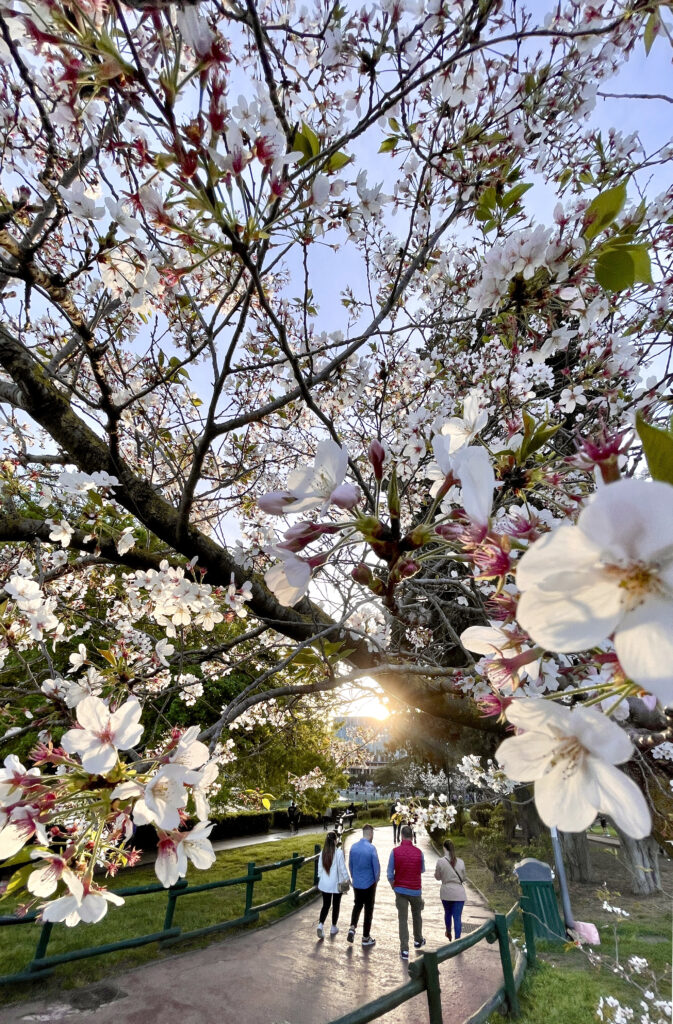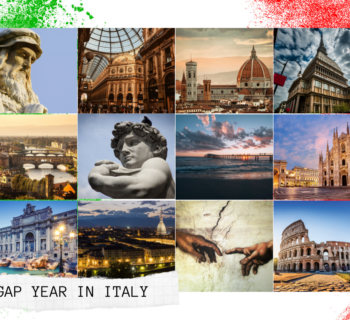The Japanese term "Sakura” refers to the blossoming of cherry trees: more specifically how when cherry trees start to bloom, their branches become filled with beautiful pink or white flowers. This event symbolically recalls Japanese philosophies linked to the intentional practice of patience, respect for nature, and through these actions the attainment of inner peace. In fact in Japan, Sakura is a national symbol not only of beauty, but also of rebirth and new life as it marks the beginning of spring after the cold months of winter.


Every year, millions of people gather in parks and gardens to observe, celebrate, and admire cherry blossoms. This is a phenomenon known as "Hanami," during which time it is possible to admire, albeit briefly, the ephemeral beauty of the blossoms and to ultimately reflect on the transitory nature of life.
The cherry tree and its delicate flowers have as such inspired countless verses dedicated to the great beauty they add to the Japanese landscape and the happiness that these blooms bring to their admirers every spring. One such example can be found in the words of the Zen monk and poet Ikkyu (1394-1481): "Open a cherry tree, but you will not find flowers: instead the spring breeze will bring myriads of them."


But this phenomenon doesn’t only take place in Japan! Cherry blossoms are found also in China and Korea as well as Nepal, India, Pakistan, Iran, Afghanistan and northern Europe. Indeed, “Sakura” has now become a symbol of hope, joy, and renewal both in Japan and around the world.
Did you know that Rome is one of the best cities in Italy to witness the spring spectacle of cherry blossoms? At the EUR Lake Park, for example, they can best be observed from a walking path named "Japan Way." This name is intended to pay homage to the gesture of the Japanese Prime Minister, Nobusuke Kishi, who in 1959 gave 2500 cherry trees to Rome as a symbol of friendship and brotherhood between the two countries. The trunks planted around the EUR lake would have made up the surrounding background setting for the rowing competitions held there during the 1960 Roman Olympics.


Alternatively, in the garden of the Japanese Cultural Institute in Rome created by architect Ken Nakajima, it is possible to enter a real Japanese garden that contains a pond, waterfall, small islands, a footbridge, and a toro, a traditional stone-carved lamp. During the cherry blossom season, the Botanical Garden of Rome also organizes workshops and themed events around this phenomenon. And finally, in the heart of Parioli, Via Panama (formerly known as Via Giappone, or Japan Street) located between Via Salaria and Villa Ada is another splendid spot to admire the cherry trees in bloom.
Unfortunately, cherry blossoms only last for a short while, usually just a few weeks. Still, it is a passing moment that leaves a lasting impression with those who have had the chance to experience it. “Sakura” is a spectacular event that reminds us of the joy and beauty to be found in nature. It is a moment to appreciate and share with others this reminder of both the beauty and the fragility of life.
Japanese haiku:
Bring with us
two cherries
and joy will come
in spring.
Unknown Hajin from Sezze
Scuola Leonardo da Vinci Rome
The Eternal City has known it all. Victory and defeat, joy and tragedy, glory and humility marked Rome’s history, culture and architecture. A magical place with vibrant, timeless lifestyle with countless secrets waiting to be discovered.
The Scuola Leonardo da Vinci is situated in the centre of Rome, in the pedestrian area, halfway from the astounding Piazza Navona, Castel S. Angelo and St. Peter Basilica. It is one of the largest schools in Rome.
We, from Leonardo da Vinci School have one mission – to introduce you to this exciting urban symphony. Every year thousand of students from more than 90 countries jump into this adventure hand in hand with us. Leonardo da Vinci School is not only leading language institute, but centre of Italian culture and lifestyle. We match our vast experience with our student’ eagerness to know and learn and together we make it happen.
Latest posts by Scuola Leonardo da Vinci Rome (see all)
- What to Do in Rome During Christmas - December 22, 2025
- Living and learning Italian in Rome: the guide for international students - September 26, 2025
- ROME: DISCOVERING THE MAXXI - August 5, 2025









